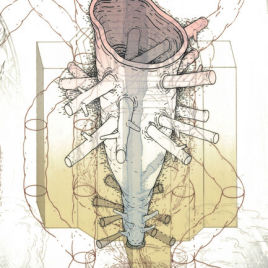Shallow Arctic lakes that remain unfrozen throughout the year contain more diverse biofilms than lakes that freeze up for a period of time, a new study has found. Researchers analyzed the genetic material of biofilm—which is a group of microorganisms that stick to one another, forming a so-called “microbial mat” on the surface of a lake—in Ward Hunt Lake. Their analysis aimed to distinguish the effect of the changes from seasonally frozen to perennially unfrozen conditions on the microbiome structure of Arctic biofilm. They discovered that biofilms in perennially liquid lakes favor anaerobic processes, which is likely to increase methane production and nitrogen consumption. The latter may have large implications for the global carbon and nitrogen budgets.
Authors:
Vani Mohit, Alexander Culley, Connie Lovejoy, Frédéric Bouchard & Warwick F. Vincent
Corresponding author:
Warwick Vincent, Département de biologie & Centre d’études nordiques (CEN), Université Laval, QC, Email: warwick.vincent@bio.ulaval.ca
Original paper published in npj: Biofilms & Microbiomes on July 6, 2017.

